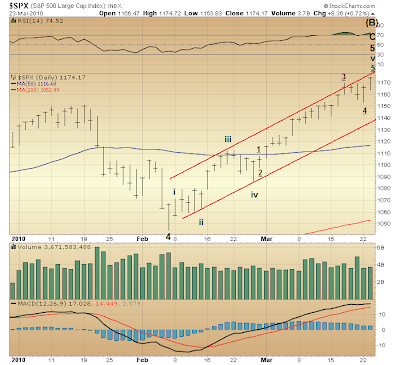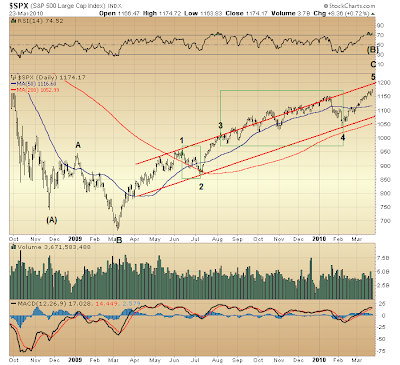Lest we forgot ... the name of the game for the past 30-40 years has been, and continues to be, "Inflate or Die" ... not "Deflate less and live for another day."
Keep this simple fact in mind (fixed, hovering above all the fog coming from trillions of dollars of still-worthless, formerly AAA-rated credit securities on the books of most every major banking institution across the globe) when any notable personality presently employed in the financial industry speaks the language of the post-WWII investment climate while making a contemporary case for maintaining a positive outlook toward the stock market, using analytical constructs (i.e. housing, employment, trade, etc.) whose relevancy ceased to exist when the securitization market collapsed in 2007. Truth is without the securitization market, any hope for a comeback in areas formerly benefiting from that largely unregulated, wild west of private sector credit creation had better get in line behind those who are waiting on the second coming of Jesus.
We are nearly two years removed from that market's collapse, and yet the word "declined" still remains a part of reporting on various measures of economic activity. The phrase "less than expected" is no consolation because, again, the name of the game is Inflate or DIE. Decline of any shape or form presents a big problem to the world that created the "just in time" inventory system for the sake of maximizing leverage on corporate cash flows. Surely, the "just in time" mindset is built into the global financial arrangement, too. The alphabet soup of bailout and backup facilities but offers all proof. Yet profound trouble lies in the simple fact liabilities at risk absolutely dwarf any power the Federal Reserve and the U.S. Treasury possesses to indefinitely maintain the illusion of solvency of the present, extraordinarily vulnerable arrangement. It is only a matter of time before a still highly unstable situation becomes further unglued.

In the spirit of recent revelations demonstrating stocks are being distributed ... and in recognition of the market's extended move higher off early-February bottom ... let's consider the possibility five waves up (rather than three) are unfolding off that bottom. Volume bumps on relatively flat-to-down days during the formation of the fifth wave — these following March 5th's short squeeze — "make sense" in the context of the past year's ongoing distribution.
Thus, the above Elliott wave count once again suggests the counter-trend rally unfolding since March '09 bottom, at last, could be nearing its end.

This prospectively is how the five waves of wave C of (B) might be seen subdividing. There is nothing at all wrong with the above view. In fact, everything conforms quite nicely to Elliott Wave Principle rules and guidelines.
Wave 4 alternates in complexity with wave 2 ... while its upward bias is seen as something of a tendency of fourth waves over the past 25 years. Waves 3 and 5 appear to be tending toward equality, thus making wave 1 the so-called "extended" wave within this five wave sequence.
Contrasting volume registered during the 1st, 3rd and 5th waves, we plainly see the hallmarks of a dying capacity to distribute dead equity. Both RSI and MACD help confirm the above wave count, too, while the latter most conclusively reveals that, momentum is fading with each lurch higher.
Yet there is MACD once again on the positive side of its balance. So, remaining to be seen is just what further contrived action might develop over the next few months, as the rollover to eventual doom begins. My foremost suspicion is that an extended period of topping still is likely to develop, much as has been mentioned here before. The only thing different resulting from the view presented today — were it, indeed, correct — is expectation that ultimate top might be imminent, rather than delayed a few months.

* * * * *
© The Risk Averse Alert — Advocating a patient, disciplined approach to stock market investing. Overriding objective is limiting financial risk. Minimizing investment capital loss is a priority.
Analysis centers on the stock market's path of least resistance. Long-term, this drives a simple strategy for safely investing a 401(k) for maximum profit. Intermediate-term, investing with stock index tracking-ETFs (both their long and short varieties) is advanced. Short-term, stock index options occasionally offer extraordinary profit opportunities when the stock market is moving along its projected path.
Nothing is set in stone. Nor is the stock market's path of least resistance always known. More often than not, there are no stock index option positions recommended.
 There's an easy way to boost your investment discipline...
There's an easy way to boost your investment discipline...Get Real-Time Trade Notification!



















